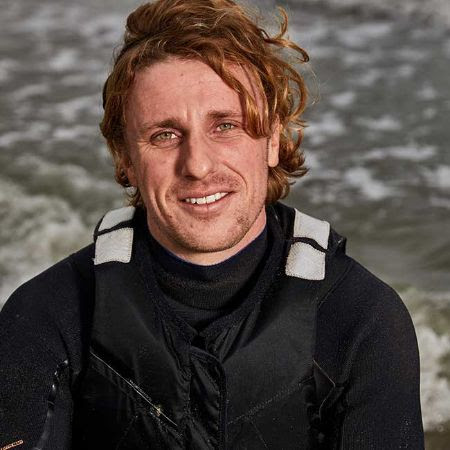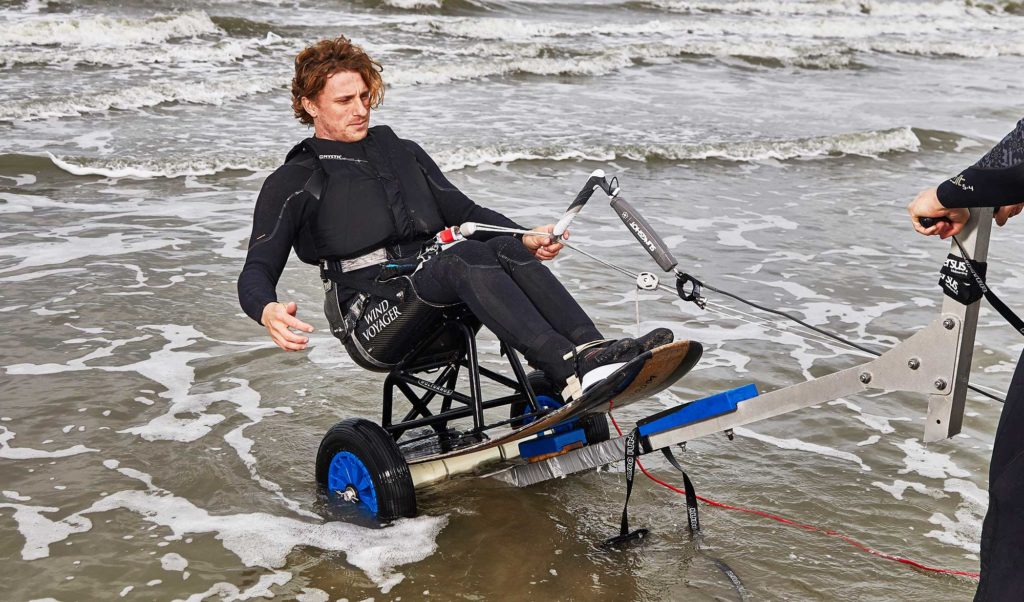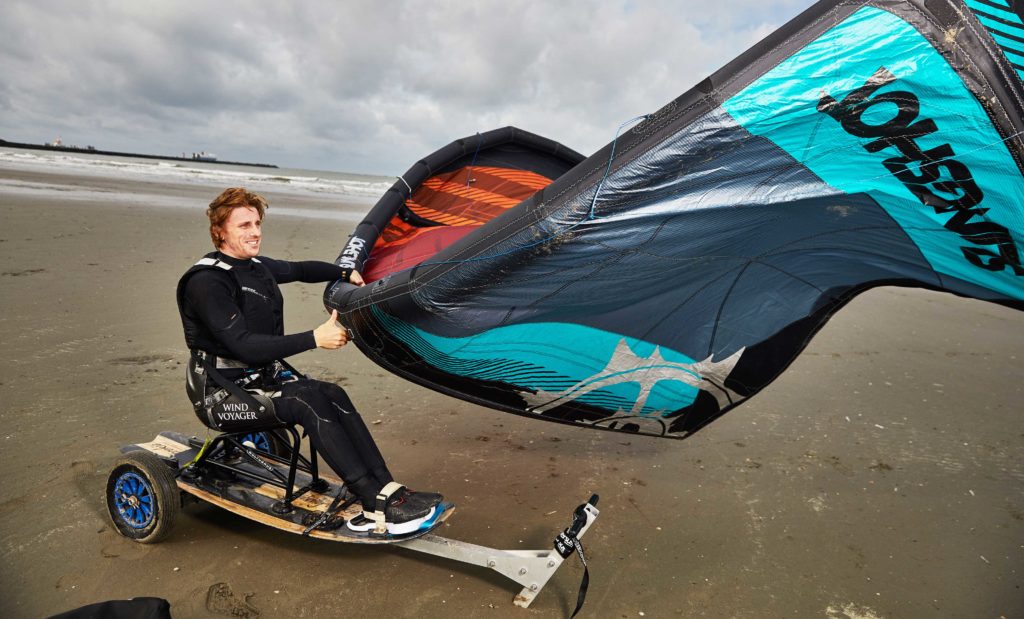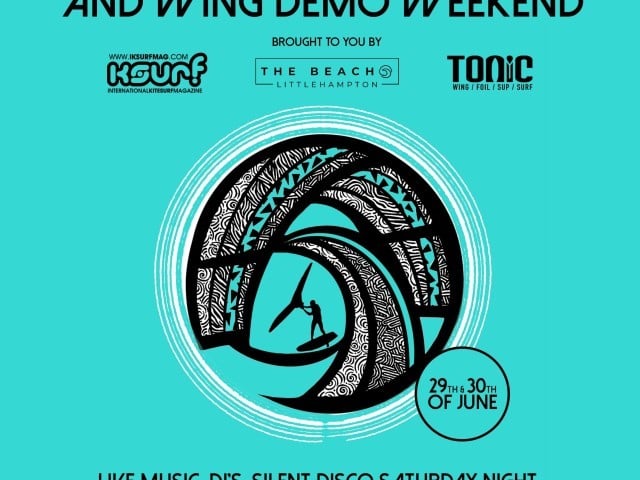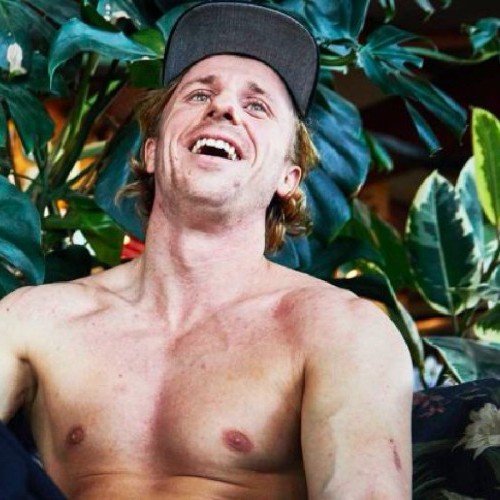
Slingshot Welcomes Adaptive Kitesurfer Willem Hooft to the Team
Tue 12th Nov, 2019 @ 6:30 pm
Slingshot Sports is excited to announce the addition of Willem Hooft to their kitesurfing team. Hailing from the Netherlands, Willem is one of the elite few Adaptive Kitesurfers and foilers in the world and Slingshot’s first team rider in this category.
“Willem pushes the boundaries of what is achievable and does it with a positive, strong-willed and enthusiastic attitude. Slingshot riders have always defied convention, pushed the limits, and evolved the way we think about team riders. Willem may be the most “Slingshot” rider we have ever signed!” says Alex Fox, kite brand manager.
“I’m grateful and super stoked to be part of the Slingshot Team which is full of inspiring people.” – Willem Hooft.
Willem’s Story
“I couldn’t live without it.” How many times have you said that about kitesurfing? If you are anything like us, you have said it more times than you can count. The combination of nature, you, and pure radical performance becomes more than a hobby or a passion it becomes a part of you. Clichés aside, being on the water and kitesurfing is an inexplicable feeling. Now imagine something like that torn away from you so mercilessly that the possibility of regaining, it makes pigs flying seem like a real chance.
For Willem Hooft, this scenario isn’t imaginary; he lived it. In a story full of ups and downs, miseries and triumphs, fast forward to the present day, and Willem is now one of the sickest adaptive kitesurfers on the planet! His drive, his determination and his badass approach to overcoming one of the most adverse situations that life can throw at you, caught our attention. Sometimes life can bring you up, sometimes life can bring you down, and every so often you become an inspiration that’s larger than life. It’s with great pleasure and humility that we welcome Willem Hooft to the Slingshot team!
SS: Willem Welcome to the team!
WH: Thanks! Super stoked to be part of the Slingshot Team. I’ve been looking forward to this moment!
SS: We’re stoked to have you on board with us. I guess I’ll start with an easy question. How long have you been kiteboarding?
WH: The moment I started kiteboarding was about one and a half years ago after I had ended up in a wheelchair. Before the motorbike accident, I was a fanatic windsurfer. I had kitesurfer just a few times on holiday, five times to be exact. I just got the basics.
SS: When we first spoke, you told me that you briefly learned to kite before your accident and then pursued kiting properly after your accident. What drew you to kiting?
WH: For me, surfing is more than just a sport, it’s the best feeling that exists. To fly over the water, to feel the power of the waves and wind. It makes me feel humble and connected to nature and her beauty. For me, there is no closer feeling of freedom.
After my motorbike accident, when I heard that I had a spinal cord injury and that I would not be able to walk again, my world collapsed. I thought of my friends, my girlfriend, my career… but mostly about my passion for surfing and all the surf dreams I would never be able to fulfil. After all, I can’t even walk anymore, let alone stand on a surfboard.
In the rehabilitation centre, I trained hard to regain as much of my independence as possible. I made great strides and became more and more handy with my ‘new’ body.
It made me believe that it should be possible for me to surf again, even though my doctor and therapists told me differently. My biggest dream was to surf the waves of Cape Town’s coast. I decided that no matter what thresholds I had to cross or how long it would take, I would make my dream come true.
During the evenings, I often spent hours thinking about ways to get back on the water. I couldn’t find much online about other paraplegics surfing. Together with friends, we decided that when I finished my rehabilitation, we would design a surfboard ourselves and make it strong enough to last in the break of Cape Town’s waves. That is when I decided to focus on kitesurfing and succeeding entirely.
I was lucky. Half a year after my accident, exactly the week that I was allowed to leave the rehabilitation centre, a friend called me. “Willem, you have to see this!” He sent me a video of a man in a wheelchair who did precisely what I wanted to do. Kitesurfing! And not only on flat water but also ripping waves and making big jumps!
I wanted to know who this man was and which board he was using. This knowledge could pave my way to progress! We started our search for him. Believe it or not, from anywhere in the world where he could live, he lived less than 30 minutes away from me. Three days later we met him at the beach in Holland. He showed me his board and told me everything about his experience. He said he started sit-kitesurfing six years ago and every year improves on the sit-kiteboard he uses. It is custom made, and only a handful of people in the kite world have one of these unique boards. I started crowdfunding at that time to have my board produced.
SS: Speaking of the accident, are you ok to give us a brief explanation about your accident?
WH: It was a cold winter morning on December 22nd in 2016. I was riding my motorbike to work, a route that I drive every day. It was quiet on the highway with very few cars. As I am approaching a tunnel, a traffic light suddenly turns red. It surprised me because usually there are no traffic lights on highways in the Netherlands, and this was new.
The car in front of me came to an immediate emergency stop. I also braked fully and felt both wheels of my motorbike start to slip. I couldn’t stop in time. At relatively low speed, I hit the car in front of me and fell off the bike into the lane next to me. “Phew,” I thought, “that could have ended worse.”
Unfortunately, I celebrated too early. From behind, a car going 90 km/hr got me, full speed. I flung 40 meters through the air, from the impact. With a hard smack, I landed on the asphalt. “Cars are coming”, is the first thing I thought. “I have to get off the highway.” I wanted to get up and crawl away, but my body was no longer responding. A second later, I noticed I couldn’t breathe. My lungs had collapsed, my ribs were broken, and my vertebrae were shattered. I felt that there was nothing I could do. I focused on my breathing, trying to get little sips of air. I was afraid I wouldn’t make it out alive. My heartbeat was irregular; my body was getting colder and colder. I couldn’t move my legs or feel them anymore. The rest of my body felt like it is on fire. The pain was unbearable.
I was relieved when the trauma helicopter finally arrived. Once in the hospital, I quickly received the message that I was already afraid of: “Mr Hooft, we are sorry to tell you this, but you have a complete spinal cord injury. You will never be able to walk again, and you may need a wheelchair for the rest of your life.” I felt my world collapse. I’ve never been so scared yet at the same time, feel so grateful to be alive and getting a second chance. I agreed with myself that whatever would come my way, I was going to make the best out of it.
SS: It seems like you are super active, so you are no stranger to pushing your body and your limits. Did that help in the learning to kite process?
WH: That certainly helped me. With windsurfing, I learned to be comfortable with extreme weather conditions and big waves. It did help me to progress quickly in kitesurfing as well. My accident contributed to my drive to live my dream and to commit myself fully to the sport.
SS: What are some of the hurdles that you encounter before/after or on a session that people who follow you on Instagram don’t see?
WH: It takes way more time for me to get in and out of the water than before I had my injury. I always need help from other people to set up my gear. I also need help to go from my van into the water. Therefore, I have a special beach trailer.
Another thing that is not always visible on my Instagram is that with my spinal cord injury comes some complications besides not being able to walk. Last year I had two surgery’s done, and there is another one coming up this November. Each surgery has a recovery period of a couple of weeks before I am fit again. After the last operation in February this year, I had to lay flat in bed for six weeks and lost a lot of muscle strength.
I try to use these recovery periods to recharge as much as possible and work out ideas that I have. For instance, I set up a foundation that helps make the sport of sit-kitesurfing more accessible to other people with disabilities. I also give motivational talks worldwide about dealing with change, personal leadership, and never giving up on your dreams.
SS: Have you met any other Adaptive Kitesurfers? Is kiteboarding something that you would suggest to other disabled / handicapped/ paraplegics?
WH: Yes, I have! But only a few. Other than myself, there is one other sit-kiter here in the Netherlands, and I know that a few guys are practising the sport other places in the world.
I would recommend sit-kiteboarding to other people with disabilities, that is the main reason why I started my foundation. Kiteboarding is fantastic, and on the water, I feel so much more freedom than in my wheelchair.
Sit-kiteboarding is not risk-free. Safety is something that I would like to see improved, and I hope I can contribute to that process. Ultimately, my dream is to see enough sit-kiteboarders on the water that we can organise International competitions or even make it a Paralympic sport. I believe that adding competitions will speed up development and will help us push the limits even more.
SS: What type of riding do you gravitate towards? People reading this interview may not necessarily know how much you rip! I’ve seen images of you wave riding, hitting some huge kickers and most recently foiling!
WH: I love foiling and jumping high kickers, but riding waves is what I love the most. At the beginning of this year in Cape Town, I also did my first back-rolls. I’m curious which other tricks are possible with a sit-kiteboard.
SS: We got you some kites a few weeks back now, have you had a chance to use them yet? What Slingshot kites are your favourite, and why?
WH: Yes, thanks a lot! My favourite kite is, for sure, the SST. I use it for wave riding and foiling. The downwind drift abilities on that model kite are amazing. My wave riding skills have improved big time since I began riding it.
SS: How was your recent Wind Voyager trip? I was fortunate enough to get on one of their trips, and it was the best time! Any plans on going back haha!?
WH: I had the best time ever! Being on a Wind Voyager trip is like living in a dream! I’m planning to go back… and also to never leave again.
SS: They’re fantastic people for sure. We saw them welcome you to their team too. This seems like an exciting time for you!
WH: For sure! Three months ago, I did not even dare to dream about being a team rider for both Slingshot and Wind Voyager. And now I am! I’m grateful and super stoked to be part of both teams full of inspiring people. You guys rock!
SS: What kiting aspirations do you have?
WH: Traveling the world to the most beautiful kitesurf spots and showing the world about the possibilities of sit-kiting. I hope to inspire others never to stop dreaming.
SS: We are super stoked to have you on the team! Follow Willem Hooft’s adventures, here!
To view all Slingshot products, please click here.


